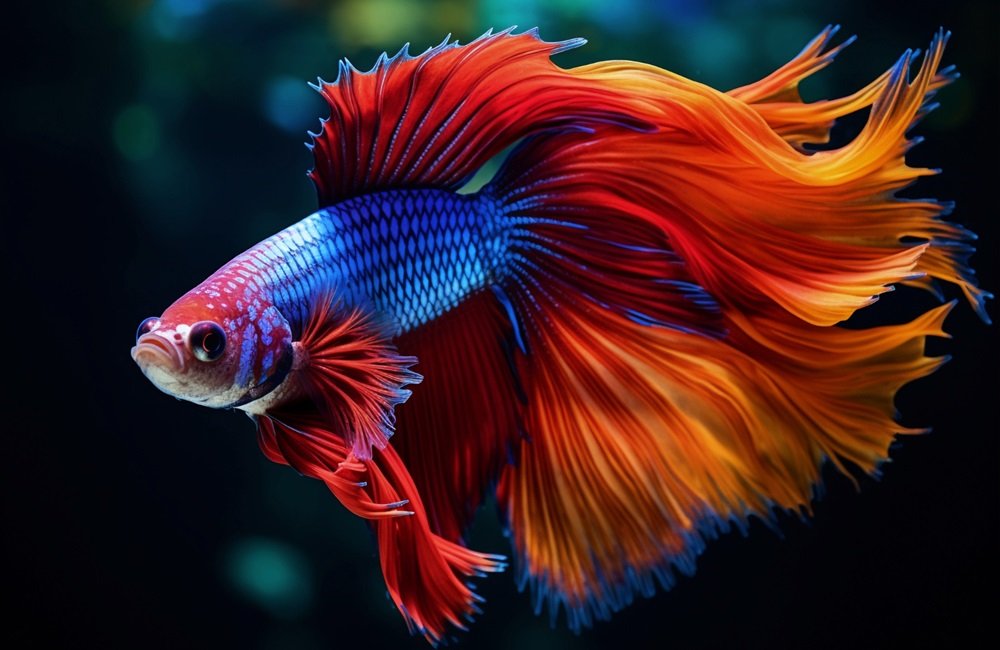Choosing the right tank mates for your betta fish is crucial for their well-being and happiness. One common question betta owners ask is whether it’s possible to keep two betta fish together. Understanding the factors involved in this decision can help you create a safe and thriving environment for your aquatic companions.
Can You Have Two Betta Fish in One Tank?
The short answer is generally no. Male betta fish are known for their aggressive territorial behavior, and introducing two males into the same tank will almost certainly lead to conflict and potentially fatal fights.
Understanding Betta Behavior
Betta fish, also known as Siamese fighting fish, have a strong instinct to defend their territory. They are solitary creatures in the wild and will display aggression towards other bettas, especially males, when their space is perceived as threatened. This aggression can manifest in fin nipping, chasing, and even violent attacks.
Can You Have Two Betta Fish In One Tank?
The vibrant and captivating betta fish, also known as Siamese fighting fish, are a popular choice for aquarists. Their flowing fins, striking colors, and unique personalities make them a joy to observe. However, a common question arises among betta enthusiasts: can you keep two betta fish in one tank? The answer, unfortunately, is generally no.
Betta Fish Aggression
Betta fish are renowned for their territoriality and aggressive nature, particularly males. In the wild, they establish and fiercely defend their own territories. Introducing another male betta into the same tank is almost guaranteed to result in a fight, which can be fatal.
Understanding Male Betta Aggression
Male bettas possess a strong instinct to dominate other males. They display a range of aggressive behaviors, including flaring their gills, chasing, biting, and fin nipping. These behaviors escalate quickly, and even if the fight doesn’t result in death, it can cause severe injuries and stress.
Female Betta Aggression
While female bettas are generally less aggressive than males, they can still exhibit territorial behavior. Keeping multiple females together can lead to skirmishes and dominance struggles, particularly if the tank is too small or resources are limited. (See Also: Can Gouramis Live With Tetras)
Tank Size and Environment
The size of the tank plays a crucial role in determining whether or not you can keep multiple bettas together. A larger tank provides more space for the fish to establish their territories and reduces the likelihood of conflict. However, even in a spacious tank, it’s generally not recommended to house multiple males.
Ideal Tank Size for Single Bettas
A minimum tank size of 5 gallons is recommended for a single betta. This allows for adequate swimming space and a suitable environment for the fish to thrive.
Tank Setup for Multiple Bettas (With Precautions)**
If you’re determined to keep multiple bettas together, it’s essential to create a carefully planned and enriched environment. This includes:
- A tank size of at least 10 gallons for a sorority (group of females)
- Plenty of hiding places, such as caves, plants, and rocks
- Multiple filtration systems to ensure water quality
- Regular water changes to maintain a clean and healthy environment
Alternative Options
If you’re looking to enjoy the beauty of multiple betta fish, there are alternative options to consider:
Keeping Bettas in Separate Tanks**
This is the safest and most reliable way to ensure the well-being of your betta fish. Each betta can have its own dedicated space, free from stress and aggression. (See Also: Where Does A Betta Fish Poop From)
Keeping Bettas with Compatible Tank Mates**
Certain species of fish, such as certain types of snails and shrimp, can be kept with bettas without causing aggression. However, it’s crucial to research compatibility carefully and ensure that the tank mates are not a threat to the betta’s health or safety.
Conclusion
While the idea of keeping two betta fish together may seem appealing, it’s generally not recommended due to their natural aggression. Male bettas should never be housed together, and even females require careful planning and a spacious environment to minimize the risk of conflict.
The best way to ensure the happiness and well-being of your betta fish is to provide them with individual tanks or carefully select compatible tank mates. By prioritizing their needs, you can create a thriving and enjoyable aquatic environment for these fascinating creatures.
Frequently Asked Questions About Betta Fish Tank Mates
Can two betta fish live together?
Generally, it’s not recommended to keep two male betta fish together in the same tank. They are highly territorial and will likely fight, sometimes to the death. Female bettas can sometimes be kept together in a sorority, but this requires a very large tank, careful selection of fish, and constant monitoring.
What are the risks of keeping two bettas together?
The biggest risk is aggression and violence. Bettas can inflict serious injuries on each other, including fin nipping, biting, and even death. Even if they initially seem to tolerate each other, their behavior can change quickly. (See Also: How Fast Is A Goldfish)
What size tank do I need for a betta sorority?
A sorority tank should be at least 10 gallons for every two female bettas. This provides ample space for them to establish territories and avoid direct conflict.
Are there any other fish that can live with a betta?
Yes, there are many peaceful, non-aggressive fish that can be kept with bettas. Some good options include snails, shrimp, Corydoras catfish, and certain types of tetras. It’s important to research each species carefully to ensure compatibility.
How can I tell if my bettas are getting along?
Signs of a peaceful betta community include: swimming calmly, ignoring each other, and sharing resources like food and hiding places. If you see fin nipping, chasing, or other aggressive behaviors, you’ll need to separate the fish immediately.


